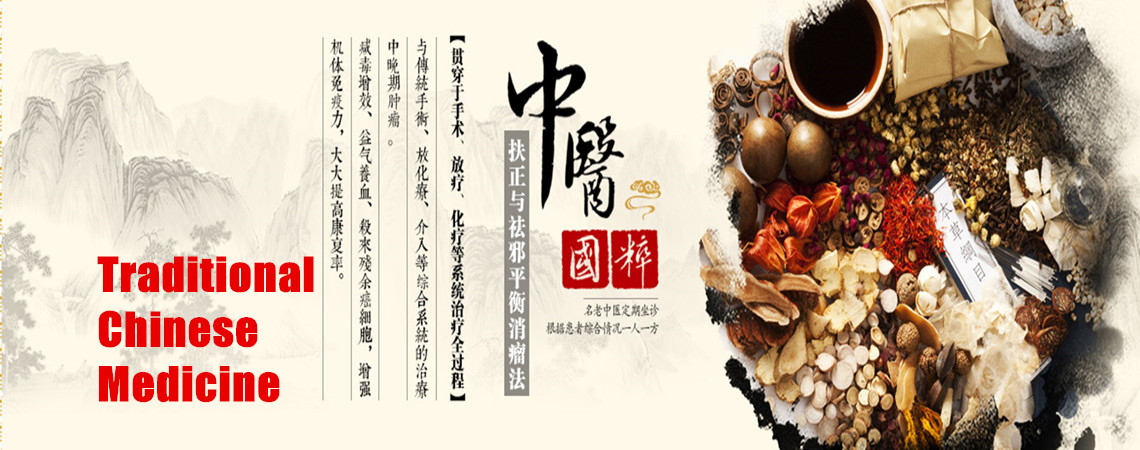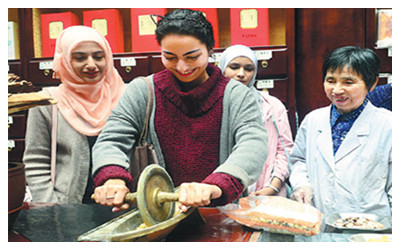Skype: neodalle-travel
Tel: +86 135 7447 2266
E-mail: sales@visitaroundchina.com

It is a project to do International Exchanges and Cooperation in TCM. Traditional Chinese medicine has been spread to 183 countries and regions around the world. According to the WHO, 103 member states have given approval to the practice of acupuncture and moxibustion, 29 have enacted special statutes on traditional medicine, and 18 have included acupuncture and moxibustion treatment in their medical insurance provisions.
Promoting the globalization of TCM
 TCM medicines have gradually entered the international system of medicines, and some of them have been registered in Russia, Cuba, Vietnam, Singapore, United Arab Emirates, and other nations. Some 30 countries and regions have opened a couple of hundred TCM schools to train native TCM workers. The World Federation of Acupuncture-Moxibustion Societies, headquartered in China, has 194 member organizations from 53 countries and regions, and the World Federation of Chinese Medicine Societies has 251 member organizations from 67 countries and regions. Traditional Chinese medicine has become an important area of health and trade cooperation between China and the ASEAN, EU, Africa, and Central and Eastern Europe, a key component in people-to-people exchanges between China and the rest of the world and between Eastern and Western cultures, and an important vehicle for China and other countries to work together in promoting world peace, improving the well-being of humanity, and developing a community of shared future.
TCM medicines have gradually entered the international system of medicines, and some of them have been registered in Russia, Cuba, Vietnam, Singapore, United Arab Emirates, and other nations. Some 30 countries and regions have opened a couple of hundred TCM schools to train native TCM workers. The World Federation of Acupuncture-Moxibustion Societies, headquartered in China, has 194 member organizations from 53 countries and regions, and the World Federation of Chinese Medicine Societies has 251 member organizations from 67 countries and regions. Traditional Chinese medicine has become an important area of health and trade cooperation between China and the ASEAN, EU, Africa, and Central and Eastern Europe, a key component in people-to-people exchanges between China and the rest of the world and between Eastern and Western cultures, and an important vehicle for China and other countries to work together in promoting world peace, improving the well-being of humanity, and developing a community of shared future.
Supporting the global development of traditional medicine. The Chinese government is dedicated to promoting the development of traditional medicine throughout the world, and works closely with the WHO to contribute to progress in traditional medicine around the globe. China has summarized its successful TCM practices and offers them to the world. It hosted the first WHO Congress on Traditional Medicine in Beijing in 2008, and played an important role in drafting the Beijing Declaration. In accordance with initiatives of the Chinese government, the 62nd and 67th World Health Assemblies passed two resolutions on traditional medicine, and urged its member states to implement the WHO's Traditional Medicine Strategy 2014-2023. Currently, the Chinese government has signed 86 TCM cooperation agreements with other countries and international organizations, and has supported the building of 10 TCM centers overseas.
Promoting standard management of TCM internationally. To promote the orderly development of TCM around the globe and ensure its safe, efficient and targeted application, China has facilitated the founding of the ISO/TC249 Traditional Chinese Medicine in the ISO. With its secretariat in Shanghai, it has now issued a series of ISO standards on TCM. Thanks to China's efforts, the WHO has included traditional medicine, represented by TCM, in the new version of the International Classification of Diseases (ICD-11). China is working actively to promote international exchange and cooperation in the supervision and management of traditional medicine, in an effort to ensure that it is safe and effective.
Providing TCM medical aid overseas. While seeking its own development, within its capacity China has persisted in providing aid and assistance to other developing countries, fulfilling its due international obligations. To date, China has sent medical teams to over 70 countries in Asia, Africa, and Latin America, with TCM professionals in almost every team, accounting for 10 percent of the total number of staff. A project has been launched to build TCM centers in African countries, and specialized TCM stations have opened in Kuwait, Algeria, Tunisia, Morocco, Malta, and Namibia. The Chinese government has sponsored 10 TCM centers overseas. In recent years, China has strengthened work in the prevention and control of AIDS and malaria in developing countries, and in African countries in particular, sending a total of 400 TCM specialists to more than 40 countries including Tanzania, Comoros, and Indonesia. Chinese medical teams have treated complicated and refractory diseases with TCM, acupuncture and moxibustion, medical massage, and methods combining Chinese and Western medicine, saving many lives and winning extensive appreciation from governments and people concerned.
Conclusion
China's economic development has entered a new historical period. TCM has come to play an increasingly significant role in the socio-economic development; it has become a unique resource in terms of healthcare, an economic resource with great potential, a scientific and technological resource with originality advantages, an outstanding cultural resource, and an ecological resource of great importance. The time has come for TCM to experience a renaissance.
China will learn from the achievements of modern civilization, uphold the principle of making the ancient serve the contemporary, and strive to promote the modernization of TCM by making every effort to carry on the good traditions and practices of Chinese medicine, and promote the innovative development of TCM for health preservation, so that TCM will be incorporated into the modern outlook on health to serve the people. By 2020, every Chinese citizen will have access to basic TCM services, and by 2030 TCM services will cover all areas of medical care. Meanwhile, China will also actively introduce TCM to the rest of the world, and promote the integration of TCM and other traditional medicine with modern technology, so as to explore a new model of healthcare to improve the well-being of all people of the world, and make a full contribution to global progress and a brighter future for mankind.
 Ask Questions ?
Ask Questions ?